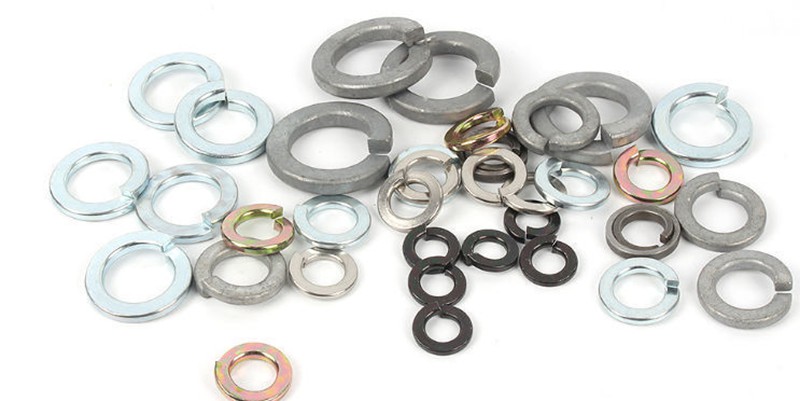- August 11, 2023
Washers used in conjunction with fastening systems form essential components of most parts. These miniature components, usually made from various materials, including carbon steel and stainless steel, operate as seals or spacers. They also function as liquid protectors and vibration absorbers.
In this article, we’d examine the different types of washers, the materials used in making them, and how to choose the right washer for your needs. So, read on to find out.
What is a Washer?
Washers are little, round, flat discs having a hole in the middle. They are made from different materials, including brass, stainless steel, carbon steel, and non-metallic materials like ceramic, phenolics, plastic, etc. Washers’ function is to facilitate the distribution of load over a relatively large area.
A washer placed between a surface and a screw act as a spacer, minimizing the effect of vibration produced by equipment or machine and preventing corrosion.
Purpose of a Washer
Washers are essential when coupling parts using bolts and nuts. Here is the purpose of washers.
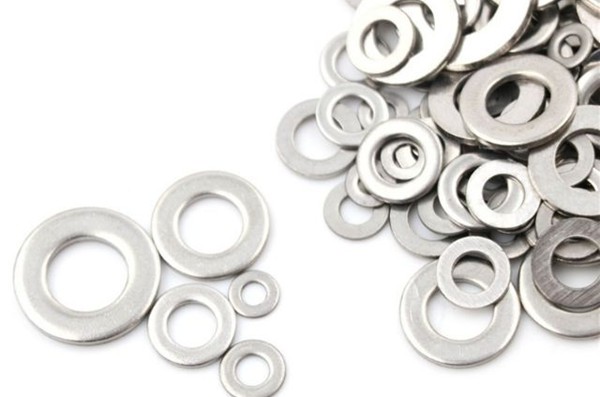
Spacing and Alignment
Washers can be utilized as spacers. When we insert a threaded fastener into an object longer than its depth, the fastener protrudes from the rear of the object. For instance, when one tries to insert a 3-inch-deep fastener in a 2-inch-deep object, the 1-inch fastener sticks out the back of the object.
However, inserting a washer into the fastener before screwing it to the object helps prevent this protrusion. Therefore, it does this by creating padding, ensuring the fastener does not go too deep into the object. Also, washers compensate for slight variations in the spacing found between types of fasteners and parts, ensuring proper alignment.
Load Distribution
Washers assist in spreading the load more equally across a broader surface. The risk of material deformation, damage, or failure is decreased by washers because they disperse the force produced by a nut or bolt. For instance, driving a screw into a softer material could result in cracks appearing on its surface. However, with washers, there is minimal damage tendency.
Seal/Liquid Protection
Washers in this category stop water and other liquids from entering and exiting. Seal washes are frequently applied in water pipelines and connectors to make a waterproof seal. Liquid-sealing washers are constructed of a flexible material, and this material choice ensures they press completely against the object’s surface.
Vibration Absorption
Vibration absorption is a feature of some washer types. Washers in this category are mainly not metals. Instead, softer materials like plastic, rubber, or urethane are used to create them. These softer materials are better at absorbing vibrations than harder elements like metal.
Additionally, vibration-dampening washers help protect coupled parts from damage. This is especially true when one of two objects connected by a threaded fastener vibrates violently.
Damage Prevention
The nut or bolt head and the surface it is fastened to are separated by washers, which serve as a protective barrier. This preserves the material’s integrity and maintains the connected surfaces’ visual appeal by preventing marring, scratches, dents, and other damages.
Corrosion Prevention
Washer fasteners, especially those made from corrosion-resistant materials, offer additional protection against corrosion and rust. This is crucial in locations where prolonged exposure to moisture, strong chemicals, or other elements can deteriorate the fastening system.
Different Types of Washers
Manufacturers use types of washers for making and coupling parts. Below are different washers and their uses.
Plain Washers
Plain washers are the most popular kind. They disperse force and safeguard the item that the screw or nut is attached to. It also helps the screw or nut fit properly into a large hole. Plain washers in this category include:
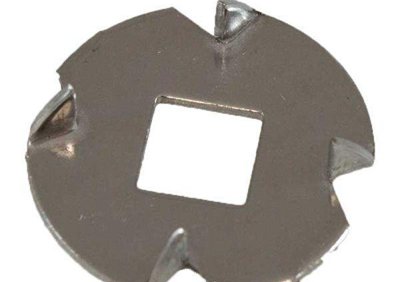
Torque Washer
The principal uses for these washers are in the woodworking industry. When a nut is tightened, the outside prongs of the washers feature square holes that prevent the accompanying bolt from spinning.
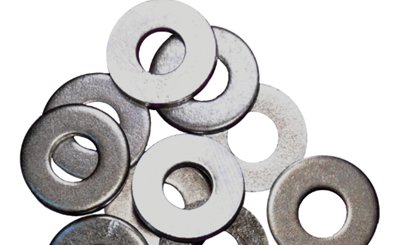
Flat washer
Flat washers have a hole in the center and are flat or disc-shaped. They are ideal for small head screws because they spread the weight across a wider surface.
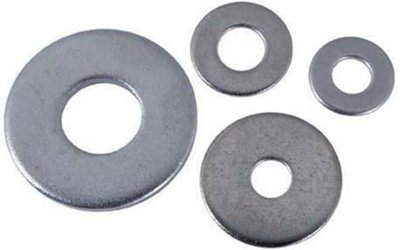
Fender washer
Fender washers are bigger and have a tiny hole in the center. They can spread out the load across a broader region. These washers are primarily used in sheet metal manufacturing, automotive fenders, and plumbing industries.
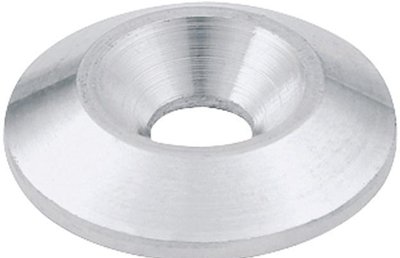
Finishing or countersunk washer
Countersunk washers in this category often create a flush finish upon securing with a flat-head countersunk screw. This ability to catch countersunk fasteners is due to its sunken top.
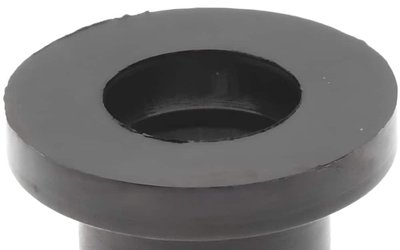
Shoulder washer
Shoulder washer fasteners in this category come in various materials, including PTFE, fiberglass, metal, phenolic, and nylon. These shoulder-like shaped washers often serve as insulators for screws and wires.
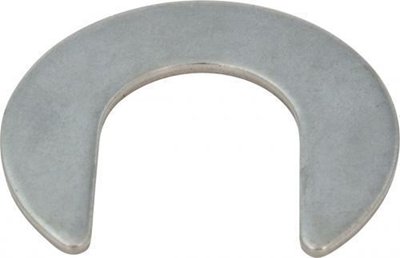
C-washer
A C-washer resembles a flat washer, but the primary difference is the hole cut from its center to form a C-shape. One primary advantage of this type of washer is that it is possible to adjust, remove or modify it without removing the fastener.
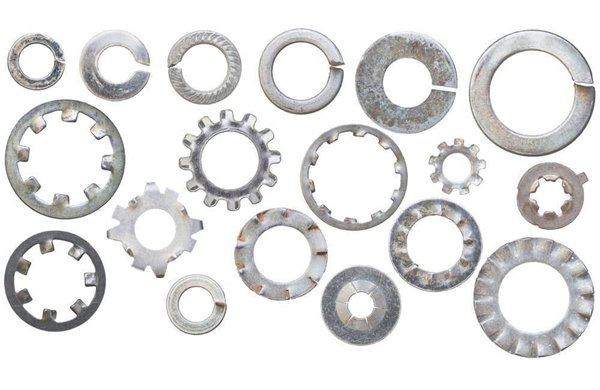
Spring Washers
For machinery that vibrates vigorously while operating, spring washers are ideal. They move with vibrations, thus preventing them from being loose or unfastened because of their axial flexibility, consequently increasing the joint’s flexibility. There are different types of spring washers.
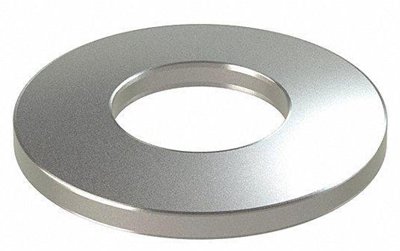
Belleville or Conical washer
These washers, often called conical spring washers, are employed to maintain tension during the assembly’s thermal expansion and contraction. They can support large weights while deflecting only slightly.
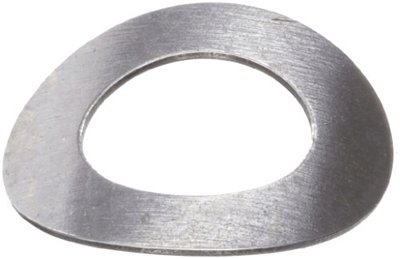
Dome spring washer
A dome washer is renowned for having a large load capacity with minimal deflection. They also absorb excessive vibrations and flatten the surface.
In addition, they have ground curves that create a load-bearing surface that is flatter. It can be used everywhere. A crescent spring washer would be useful, although flattening the surface is also necessary.
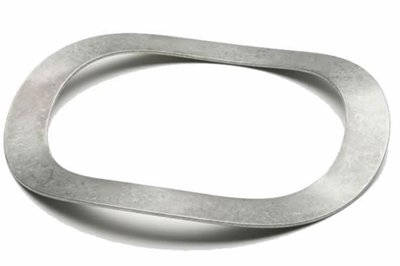
Wave spring washer
Wave spring washers are curved in two directions and are typically employed as cushions or spacers. They can support a moderate amount of weight and guard against excessive wear on the surface.
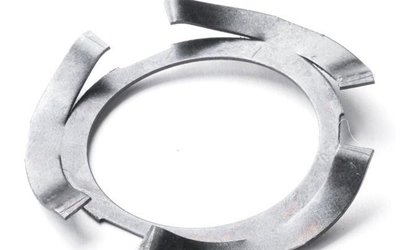
Finger spring washer
Made using carbon steel, finger spring steel washers comprise three curved flanges. They help lessen vibration, skidding wear, additional wear, dampening, and noise on rotating parts.
Carbon steel is commonly used to make finger spring washers. They blend the wave washer’s predetermined load spots with the casing washer’s flexibility.
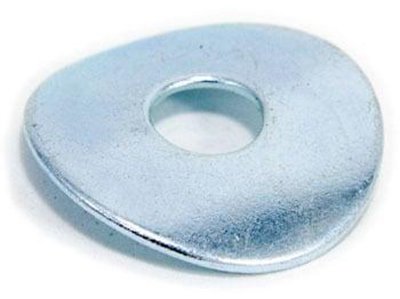
Crescent spring washer
The crescent spring washer, also called curved spring washer, has a somewhat curved appearance that gives them a lighter pressure while maintaining flexibility. They have an extensive deflection range and can withstand extremely light loads.
These washers have linear load-deflection characteristics and offer uniform spring rates throughout the deflection range.
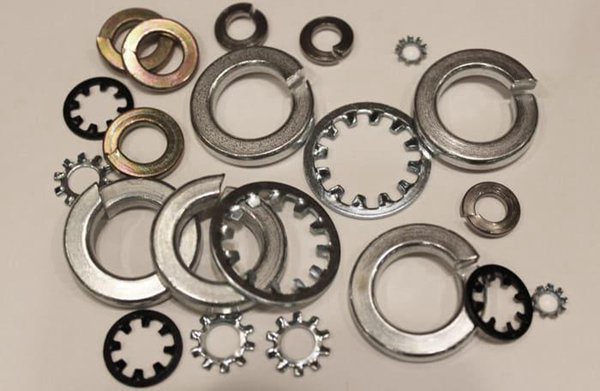
Lock Washers
Lock washers are designed to help prevent the screws and nuts from rotating toward their loosening position. Consequently, this preserves them even during intense vibrations produced by the machine or equipment’s operation. In other words, they hold the fasteners that tend to loosen due to friction in place. The different types of lock washers include:
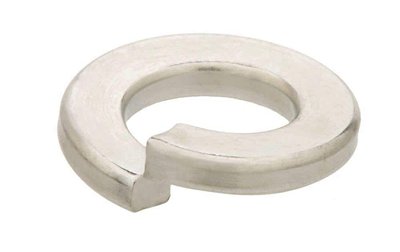
Split lock washer
The split lock washer, commonly called a helical washer, is used to secure fasteners. They are non-continuous rings bent inward and outward in opposing directions. When this fastener is used to secure the bent, both ends of the bent flatten out and dig into the mating surface.
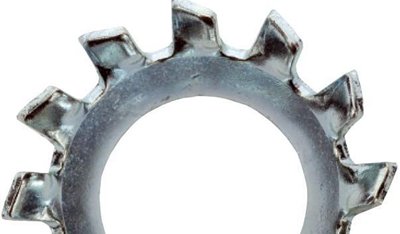
External tooth lock washer
External tooth lock washers employ a teeth-structural action to keep the nut or screw head from coming undone. They function better with screws that have a larger head. The numerous teeth on their outer diameter bite into the surface to produce exceptional compression resistance, consequently ensuring they provide the highest level of torsional resistance.
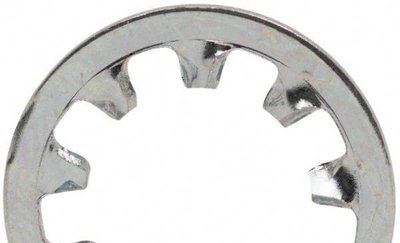
Internal tooth lock washer
On the inside diameter of the internal tooth locker are many teeth that prevent the bolt or nut head from loosening. They serve to dampen noise and shock while locking shallow-head fasteners into position.
Specialized Washers
Specialized washers do not fall expressly into any of the above categories. Here is their information.
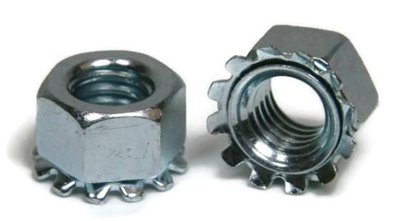
Keps nut
Also referred to as K-lock nuts, these washers with built-in washers facilitate spinning. The assembly functions more efficiently, thanks to the nuts.
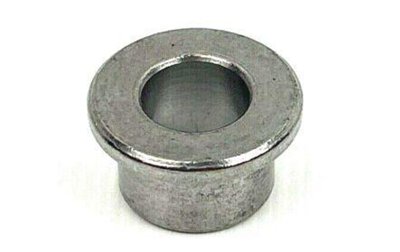
Top hat washers
These washers are perfect to utilize while repairing or installing a tap because they are typically used in plumbing applications.
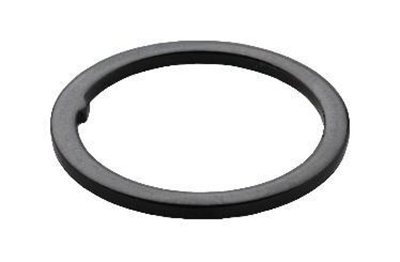
Keyed washers
Typically used between bolts to prevent them from spinning, these washers are placed keyed washers typically find application in the automotive industry. These washers have an internal tab that prevents the automobile shaft from rotating. They also find use in chassis parts and cylinder heads.
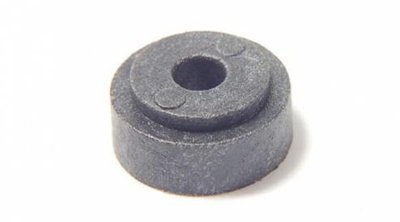
Insulating shoulder washer
Insulating shoulder washers are often made from nylon, peek, plastic, and other insulating materials. The best use for these washers is in the electrical sector, where they help isolate mounting screws from electrical current.
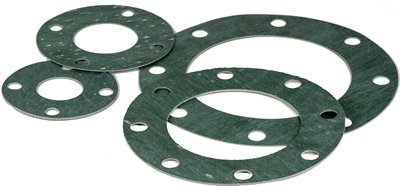
Gaskets
Gaskets, also known as O-rings, and made of rubber, come in different shapes and sizes depending on the purpose. It is a mechanical seal that fills the space between two or more surfaces in contact to prevent leaks and spills. In the automotive sector, their primary use is to slam shut oil and gas connectors and stop leaks.
Aside from rubber, gaskets can be made from light metals, such as aluminum, and other metals. These washers maintain a tight seal regardless of pressure and temperature, preventing gases and liquids from escaping.
Materials Used to Make a Washer
Washers are made from different materials, including metal, plastic, and rubber. The type of material used in making a washer is often dependent on the material. For instance, metal washers are mostly used if great strength is required. When a tight seal and flexibility are required, rubber is the best material. For minor uses, plastic is ideal. Below are the materials used for making washers.
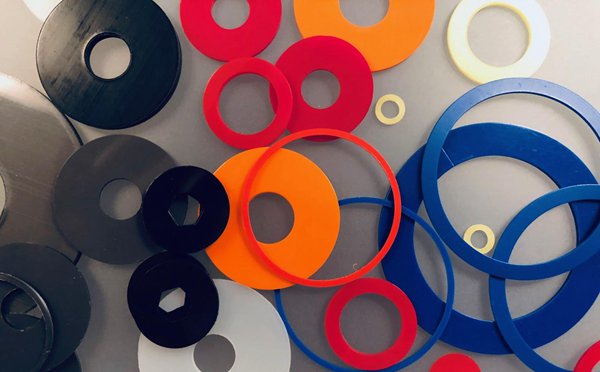
Rubber and Nylon Washers
It’s good knowledge that rubber washers are made of synthetic rubber nitrile. Regarding sealing washers, this material and nylon have some similar qualities. These washers can effectively seal uneven surfaces since rubber is more flexible and pliable. However, rubber and nylon have the disadvantage of quickly distorting under strong compression forces, reducing the washer’s life span.
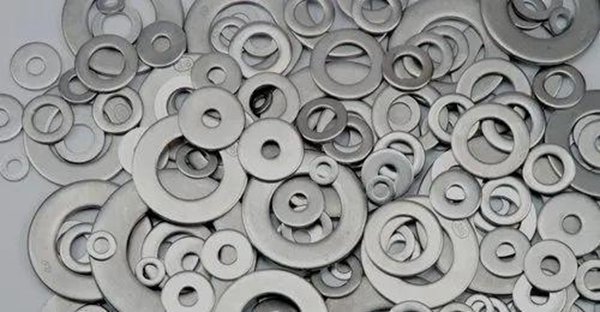
Metal Washers
There are different types of metals and grades of metals used in making washers due to the different beneficial properties of these metal washers. Metal washers often form a powerful seal, preventing leaks and drips, especially for metal washers made from stainless steel, due to their corrosion resistance.
Asides from preventing leaks in some cases, metal washers like copper and other softer metals can help keep connections safe by reducing machine vibration.
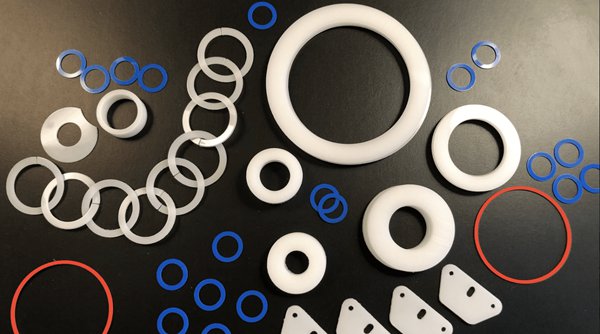
Plastic Washers
Compared to metals, plastic washers made through injection molding are more affordable. Consider employing a plastic washer if your application doesn’t need excessive strength. Also, use a plastic washer when electrical isolation and vibration resistance are required.
Plastic washers are particularly well suited for electronics. While some come in different colors, you can also find clear plastic washers.
Size Chart of Different Washers
Machinists use two major washer size standards; SAE washers and USS flat washers. The SAE washers are usually thinner and smaller than the USS washers. Below is a washer types chart of both washer categories.
| SAE FLAT WASHERS | |||
| Size | Inside Diameter | Outside Diameter | Thickness |
| #6 | 5/32″ | 3/8″ | 3/64″ |
| #8 | 3/16″ | 7/16″ | 3/64″ |
| #10 | 7/32″ | 1/2″ | 3/64″ |
| 1/4 | 9/32″ | 5/8″ | 1/16″ |
| 5/16 | 11/32″ | 11/16″ | 1/16″ |
| 3/8 | 13/32″ | 13/16″ | 1/16″ |
| 7/16 | 15/32″ | 59/64″ | 1/16″ |
| 1/2 | 17/32″ | 1-1/16″ | 3/32″ |
| 9/16 | 19/32″ | 1-3/16″ | 3/32″ |
| 5/8 | 21/32″ | 1-5/16″ | 3/32″ |
| 3/4 | 13/16″ | 1-1/2″ | 9/64″ |
| 7/8 | 15/16″ | 1-3/4″ | 9/64″ |
| 1″ | 1-1/16″ | 2″ | 9/64″ |
| 1-1/8 | 1-3/16″ | 2-1/4″ | 9/64″ |
| 1-1/4 | 1-5/16″ | 2-1/2″ | 5/32″ |
| 1-1/2 | 1-7/16″ | 3″ | 3/16″ |
| USS FLAT WASHERS | |||
| Size | Inside Diameter | Outside Diameter | Thickness |
| 3/16 | 1/4″ | 9/16″ | 3/64″ |
| 1/4 | 5/16″ | 3/4″ | 1/16″ |
| 5/16 | 3/8″ | 7/8″ | 5/64″ |
| 3/8 | 7/16″ | 1″ | 5/64″ |
| 7/16 | 1/2″ | 1-1/4″ | 5/64″ |
| 1/2 | 9/16″ | 1-3/8″ | 7/64″ |
| 9/16 | 5/8″ | 1-1/2″ | 7/64″ |
| 5/8 | 11/16″ | 1-3/4″ | 9/64″ |
| 3/4 | 13/16″ | 2″ | 5/32″ |
| 7/8 | 15/16″ | 2-1/4″ | 11/64″ |
| 1″ | 1-1/16″ | 2-1/2″ | 11/64″ |
| 1-1/8 | 1-1/4″ | 2-3/4″ | 11/64″ |
| 1-1/4 | 1-3/8″ | 3″ | 11/64″ |
| 1-3/8 | 1-1/2″ | 3-1/4″ | 3/16″ |
| 1-1/2 | 1-5/8″ | 3-1/2″ | 3/16″ |
| 1-5/8 | 1-3/4″ | 3-3/4″ | 3/16″ |
| 1-3/4 | 1-7/8″ | 4″ | 3/16″ |
| 1-7/8 | 2″ | 4-1/4″ | 3/16″ |
| 2″ | 2-1/8″ | 4-1/2″ | 3/16″ |
| 2-1/2 | 2-5/8″ | 5″ | 15/64″ |
| 3″ | 3-1/8″ | 5-1/2″ | 9/32″ |
What are the Shapes of Washers?
Washers come in different shapes, often dependent on their functionality. There are some washer shapes.
Spherical Shape
As their intended purpose, these washers have a precise, parallel plane between the bolt head and the nut face. Spherical washers automatically correct and balance the angular misalignment between the planes while guarding against bolt bending. Examples include fender, slotted, countersunk, and flat washers.
Square Shape
Compared to round washers, square washers have a higher surface area, which improves torque distribution. They help in corrosion resistance and rotation prevention.
Additionally, they are employed to restrict electrical current, vibration, and sound for usage in seismic applications. Washers in this category include flat, structural, and countersunk washers.
Shoulder Shape
These washers are also known as insulator washers. They are non-metallic, often made of nylon. Shoulder washes typically come with a long or short barrel. They protect fasteners from moisture and dirt.
Wave Shape
Usually made from metals, wave washers are often curved in two directions. They function primarily as spacers or cushions; when compressed, they help sustain loads and maintain fastener tension. An example is the wave washer.
C-Shaped
Designed to slide in and out of position on a bolt without necessarily loosening it, C-washers find use as a retention device on a grooved shaft. They help keep components in place. Examples include the lock and slotted washer.
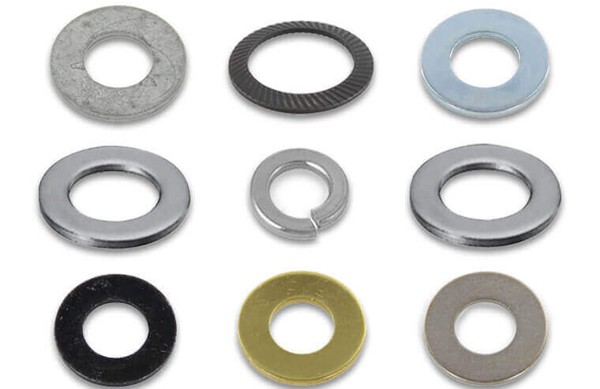
Washers Standards You Need to Know
ASME ANSI B18.22.1 Plain Washers
The ASTM F844 standard covers the widely used inch series flat washers. These flat washers are made with a bearing surface and utilized under bolt heads or bolt-like external threaded fasteners.
ASME B18.21.1 Helical Spring-Lock Washer
Spring lock washers from the inch series are available in ordinary, heavy, extra-duty, and high-collar varieties. It is constructed from stainless steel, 65Mn or #70 steel, or spring steel. For common applications, spring lock washers distribute the load over a larger area for some head designs and offer a hardened bearing surface to make up for acquired looseness between assembly component components.
DIN 125A Flat Washers
Flat washers under DIN 125A specifications are made of sheet metal, have a smooth bearing surface, and go underneath the heads of nuts and bolts. Flat washers are often constructed of stainless steel and carbon steel.
DIN 6799 Retaining Washers
A type of spring steel or other high-performance washers, stainless steel produced machinery component is the DIN6799 retention washer, often known as an E-Ring. It is used as an eccentric shaft with grooves for spring retention and is appropriate for transmitting axial forces.
How to Choose the Right Washer?
When choosing a suitable washer for your project, here are some rules or factors to keep in mind to ensure you are choosing the right washer for your needs.
Type of Material
The first factor to consider when choosing a washer is the strength of the material you intend to use. When using a washer that is stronger than the base material could damage the base material. However, if it is difficult to find a washer with strength that matches the base material, it is best to use large-sized washers to avoid making indentations on the material. This is particularly true when working with fiberglass, rubber, and plastic materials.
Match Washer to Bolt Strength
The type of bolt you use should determine the type of washer too. It is best to match high-strength bolts to high-strength washers to ensure part and product stability following design for assembly principles. Also, ensure the bolted parts are similar, which means metal to metal or plastic to plastic. Bolting steel to rubber or plastic washer is not recommended.
Environmental Concerns
It is best to consider environmental factors where the washer would be used. If the washer is exposed to the forces of weather and climate, then you might want to choose a washer made from materials resistant to corrosion. Also, consider galvanic corrosion between metals that are dissimilar to consideration, as it could affect the durability of the washer.
WayKen Meets Your Specific Washer Needs
At Wayken, we offer comprehensive custom machining services for your unique application. Besides, we provide a wide range of high-quality materials for your washer production that aligns with your specifications and demand.
With professional engineers and machinists, our outstanding product quality is met through strict control inspection. Our experts are dedicated to ensuring your order is of premium results and the perfect fit for your parts.
Conclusion
The washer is a flat plate in the form of a disc with a center hole. There are different washer types, ranging from flat to spring. They are utilized to distribute loads over a sizable area. It is mostly utilized for springs, spacers, pre-loading screws, and vibration reduction. Not sure what kind of washer you need? Contact WayKen today.
FAQ
Why do we use washers with screws?
Without a washer for a screw, a screw’s threads could pierce the material during tightening, damaging the joint’s bearing surface. Washer screws help share the weight.
What’s different between spring washers and flat washers?
While spring washers are curved, plain washers are flat. The majority of applications employ plain washers. Spring washers are suggested for vibrating machinery and parts because they offer an axial load to counter vibrations and keep fasteners from loosening.
How to use washers in a fast way?
First, screw the bolt into the washer. Afterward, insert the washer and bolt into the mounting hole. Then start twisting the bolt head with the correspondingly sized wrench. Once the head of the bolt touches the washer, tighten it down to it.

